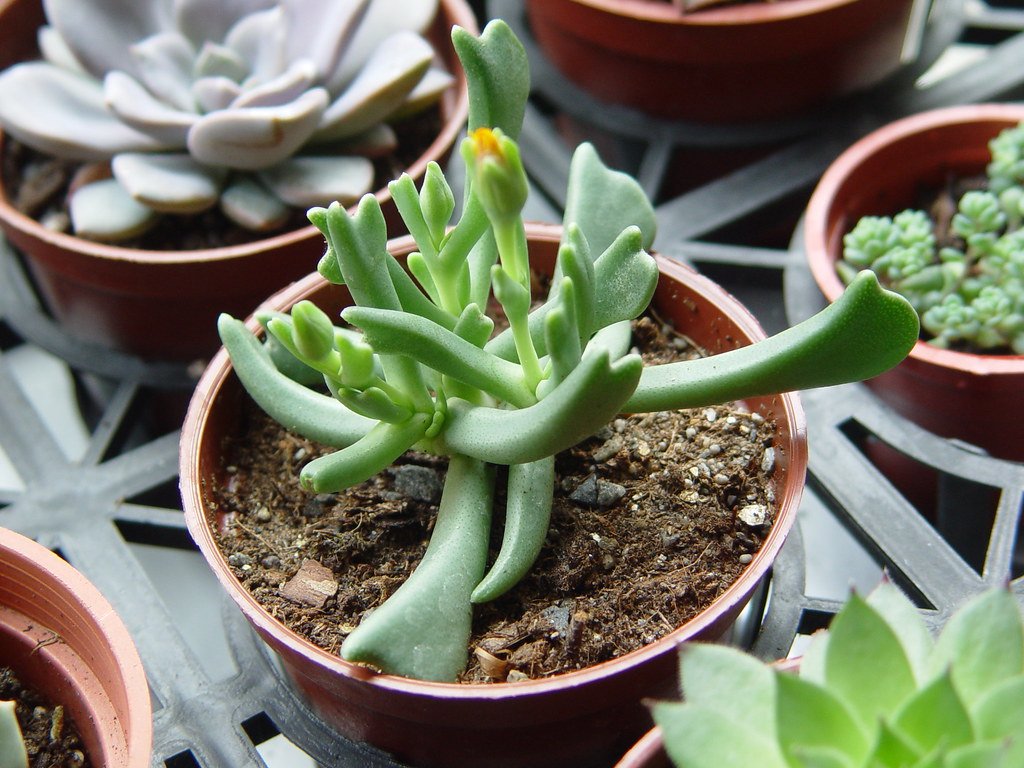Nature has a way of surprising us, especially when it creates living sculptures like succulents with geometric patterns. These plants aren’t just visually intriguing—they almost seem like art.
Their orderly, symmetrical shapes often resemble fractals, spirals, or cubes, making them captivating additions to any home garden or modern space.
For plant lovers, these succulents aren’t just about beauty. They represent balance, structure, and a calming visual that brings serenity to indoor environments.
In this guide, we’ll explore the most stunning succulents that showcase geometric perfection, how to care for them, and how to style your space with their natural charm.
Why Geometric Succulents Are Trending
The rise of geometric succulents isn’t random—it’s tightly linked to the design world’s love for symmetry, minimalism, and natural texture.
Platforms like Pinterest and Instagram have given these visually structured plants a place in everything from desk setups to wedding backdrops.
Beyond aesthetics, people are drawn to their easy-care nature and compact form. A beautifully patterned succulent on a windowsill or desk offers more than decor—it’s a natural stress reliever.
Many geometric succulents are also slow-growing, making them perfect for small spaces and curated collections.
Their architectural appeal blends seamlessly with Scandinavian, bohemian, and modern industrial interiors. They also align well with the principles of Feng Shui, drawing in positive energy and balance.
Top 8 Geometric Succulents You’ll Love
Let’s explore the most captivating succulents that flaunt nature’s design genius. Whether you’re a beginner or a collector, these plants are guaranteed to turn heads.
1. Haworthia cooperi
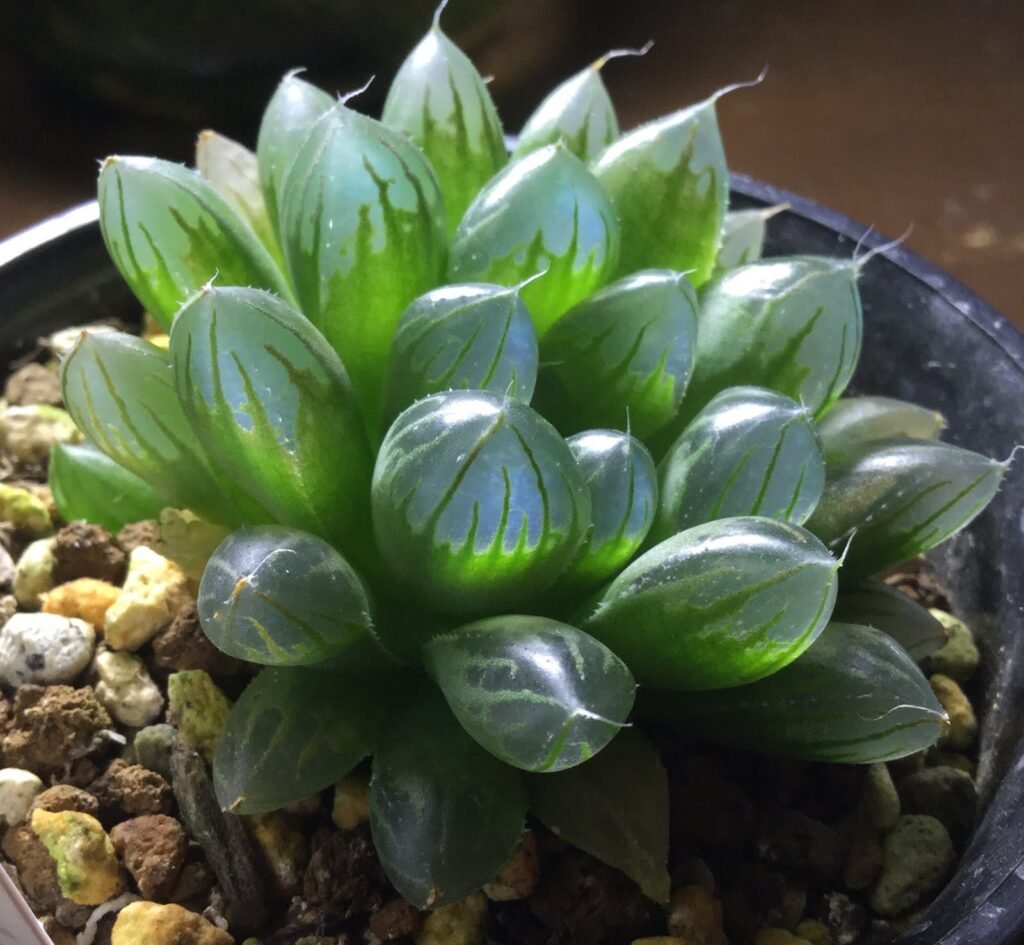
This succulent is famous for its almost alien-like rosettes. Each fleshy leaf is topped with a translucent bubble, giving it a plump and glowing look. What makes it truly geometric is the precise leaf arrangement and symmetry, like nature’s version of a clustered crystal.
Why it’s special: The windowed tops help it photosynthesize in low light, making it ideal for indoor displays.
2. Echeveria ‘Raindrops’
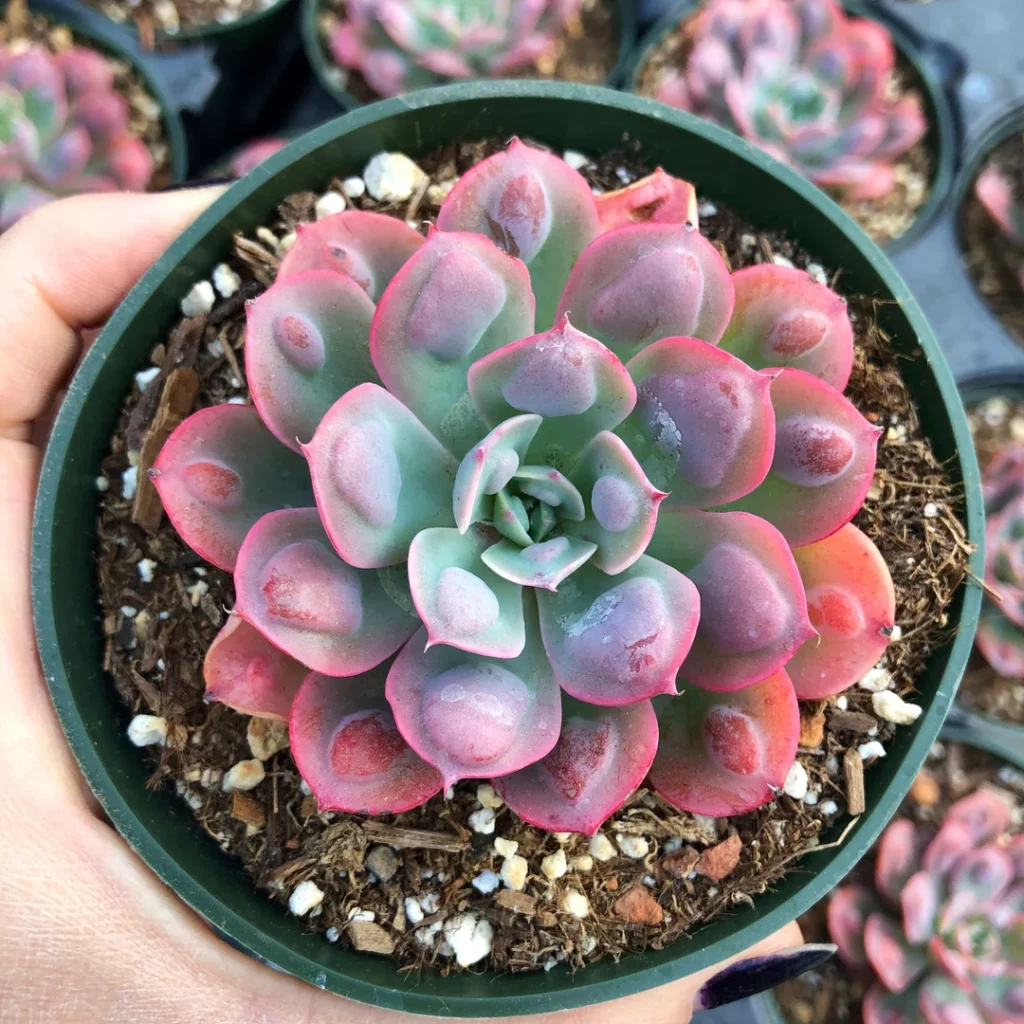
Echeverias are known for their rosette shapes, but Raindrops takes it a step further. Each leaf features small raised bumps that resemble droplets. The form is tight, uniform, and deeply satisfying to look at.
Why it’s special: The blend of symmetry and unexpected texture makes it a collector’s favorite.
3. Aloe polyphylla (Spiral Aloe)
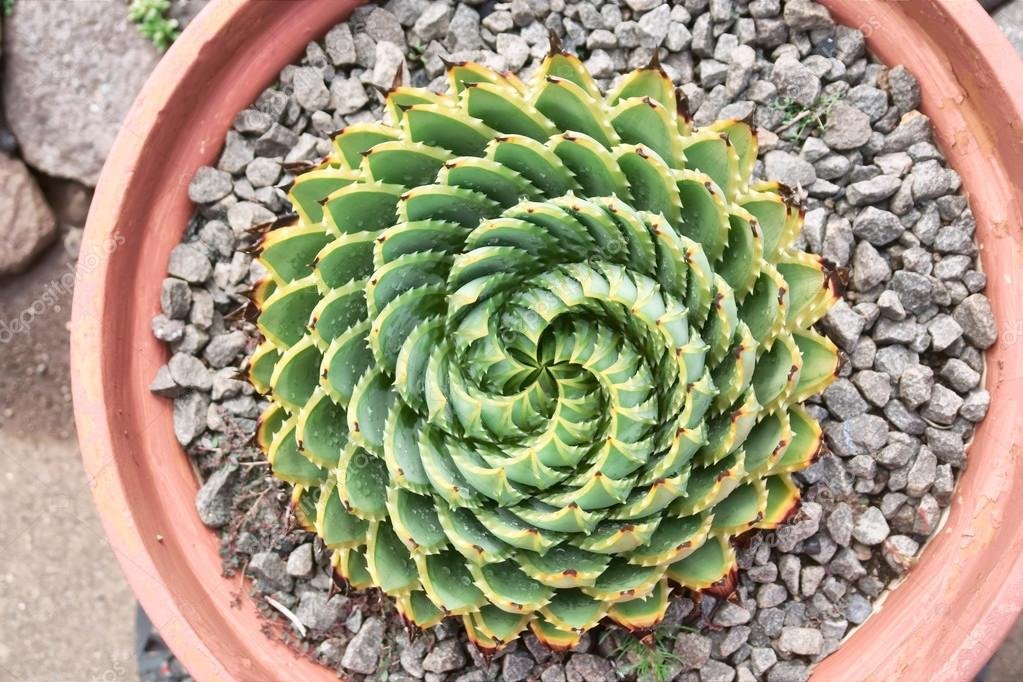
A true masterpiece, this Aloe doesn’t just grow—it spirals. It forms a mesmerizing Fibonacci spiral, either clockwise or counterclockwise, as it matures.
Why it’s special: Its pattern is so precise that it often looks digitally rendered. A must-have for any succulent enthusiast who appreciates nature’s math.
4. Crassula ‘Buddha’s Temple’
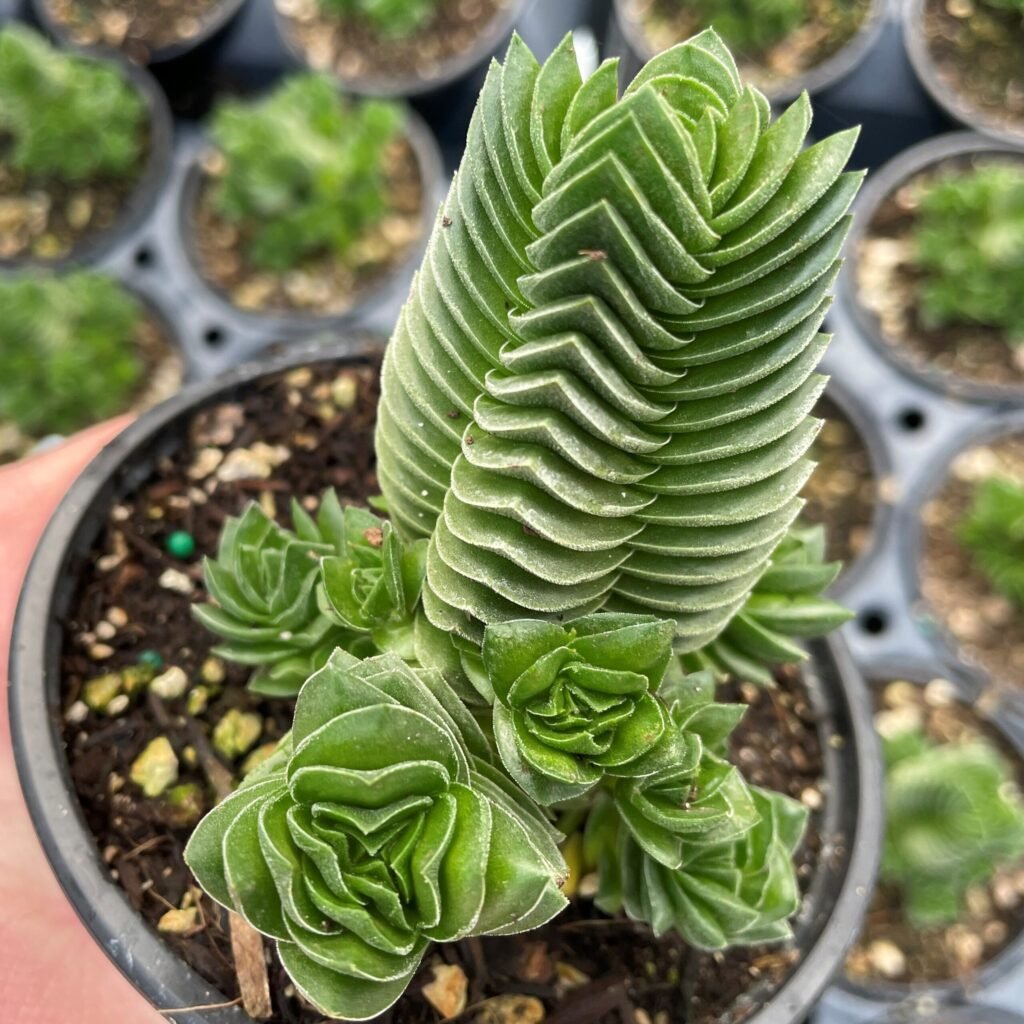
Imagine a cube made of stacked green leaves—that’s Buddha’s Temple. The leaves are tightly pressed and grow upward in a cross-stacked form, mimicking an ancient stone pagoda.
Why it’s special: Its architectural form is like nothing else in the succulent world. It’s a living sculpture.
5. Lithops (Living Stones)
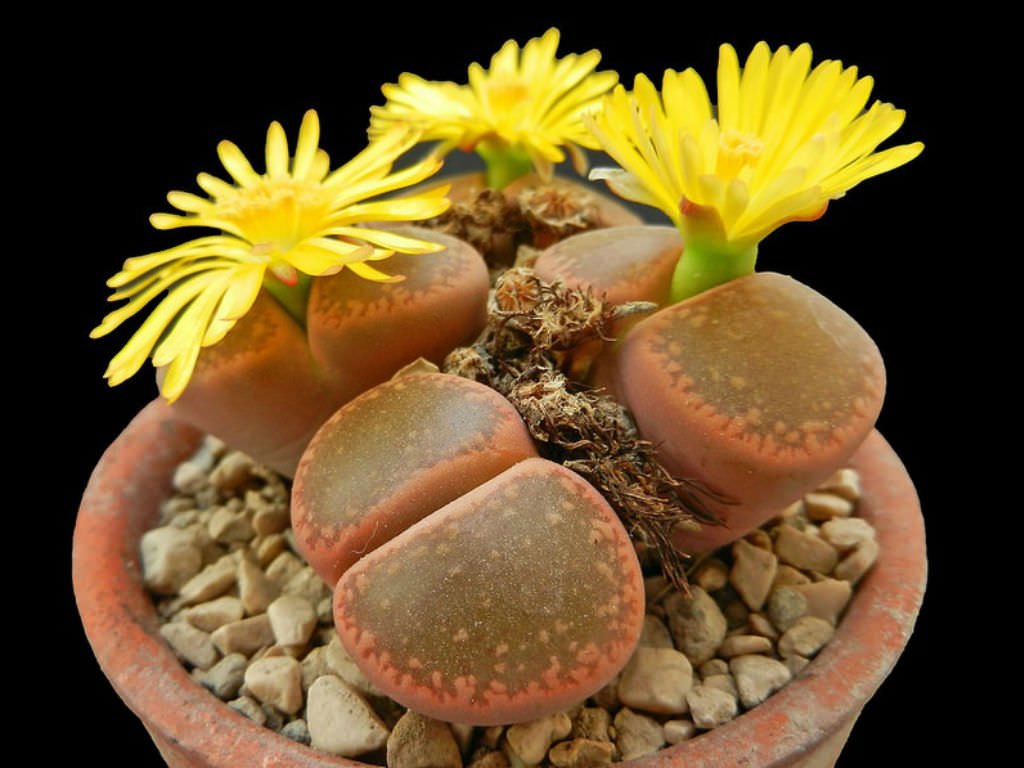
At first glance, you might think these are pebbles, not plants. Lithops have a split-center, round form, often marked with intricate patterns resembling cracks or brain-like textures.
Why it’s special: Their mimicry is geometric camouflage at its finest, and their symmetrical design is mathematically satisfying.
6. Faucaria tigrina (Tiger Jaws)
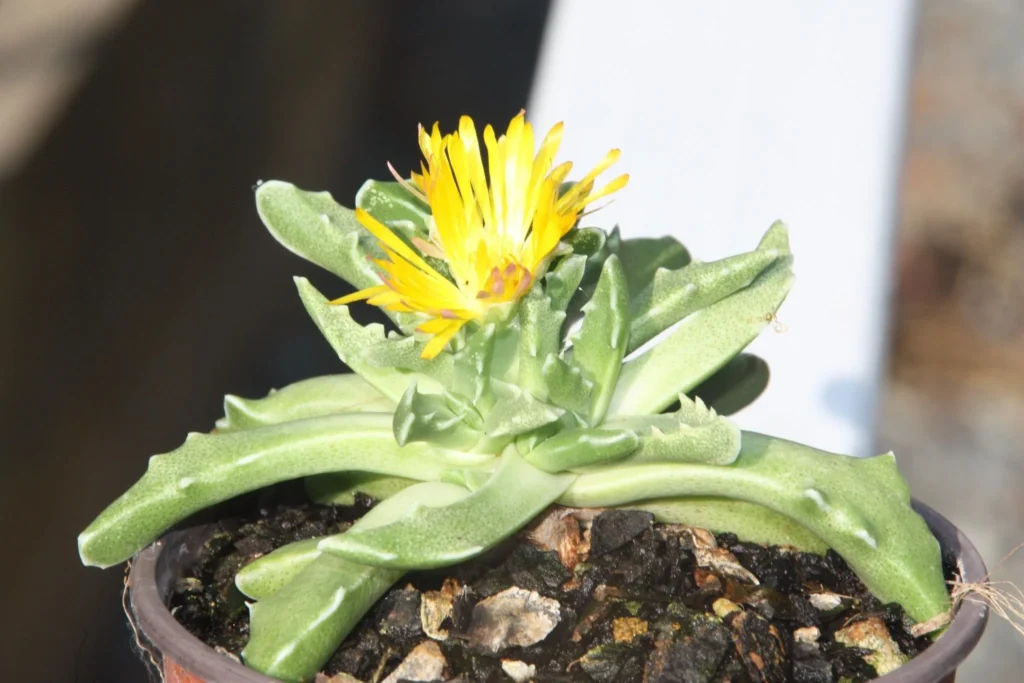
The leaf edges of Tiger Jaws are triangular and toothy, resembling—you guessed it—a tiger’s mouth. The leaves grow in opposite pairs, forming a spiky, square arrangement.
Why it’s special: Its angular symmetry makes it both fierce and beautiful, perfect for adding contrast to soft arrangements.
7. Sempervivum (Hens and Chicks)
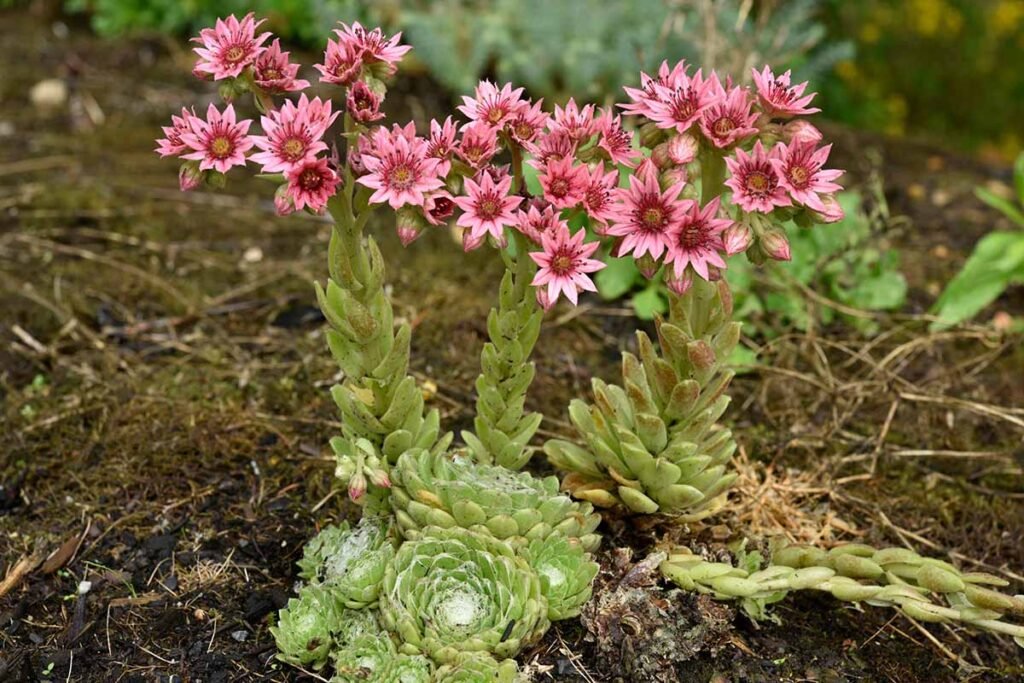
These hardy plants form dense rosettes that repeat in perfect spirals. Over time, they produce offsets that mimic the parent, creating a fractal effect across your planter.
Why it’s special: Their geometric growth makes them ideal for patterns in outdoor rock gardens or wall installations.
8. Ariocarpus fissuratus
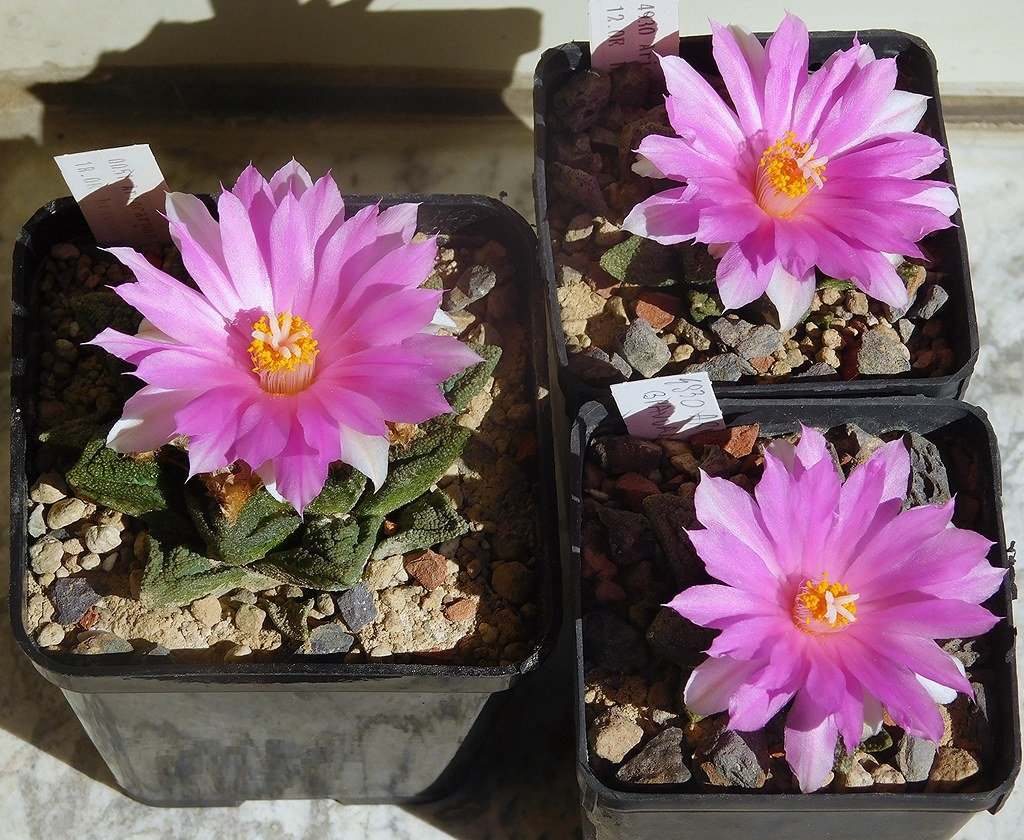
Though it looks like it belongs on another planet, this cactus has triangular tubercles arranged in a rose-like pattern. It’s flat to the ground, blending into rocky environments with elegance.
Why it’s special: Rare and slow-growing, it’s a collector’s gem with unmistakable geometry and texture.
Symbolism and Geometry in Succulents
Many cultures see geometric succulents as symbols of balance and harmony. Their patterns mirror sacred geometry—the belief that certain shapes and ratios carry spiritual significance.
In home decor, this translates to peace, focus, and mindfulness. Placing a symmetrical succulent like a Spiral Aloe in a meditation space or workspace subtly brings in calming energy. These plants often feature in Feng Shui arrangements to improve flow and reduce mental clutter.
There’s also a strong link between the structure of these plants and our instinctual love for order. Just like how a mandala calms the mind, geometric succulents do the same visually.
Other Mesmerizing Geometric Succulents
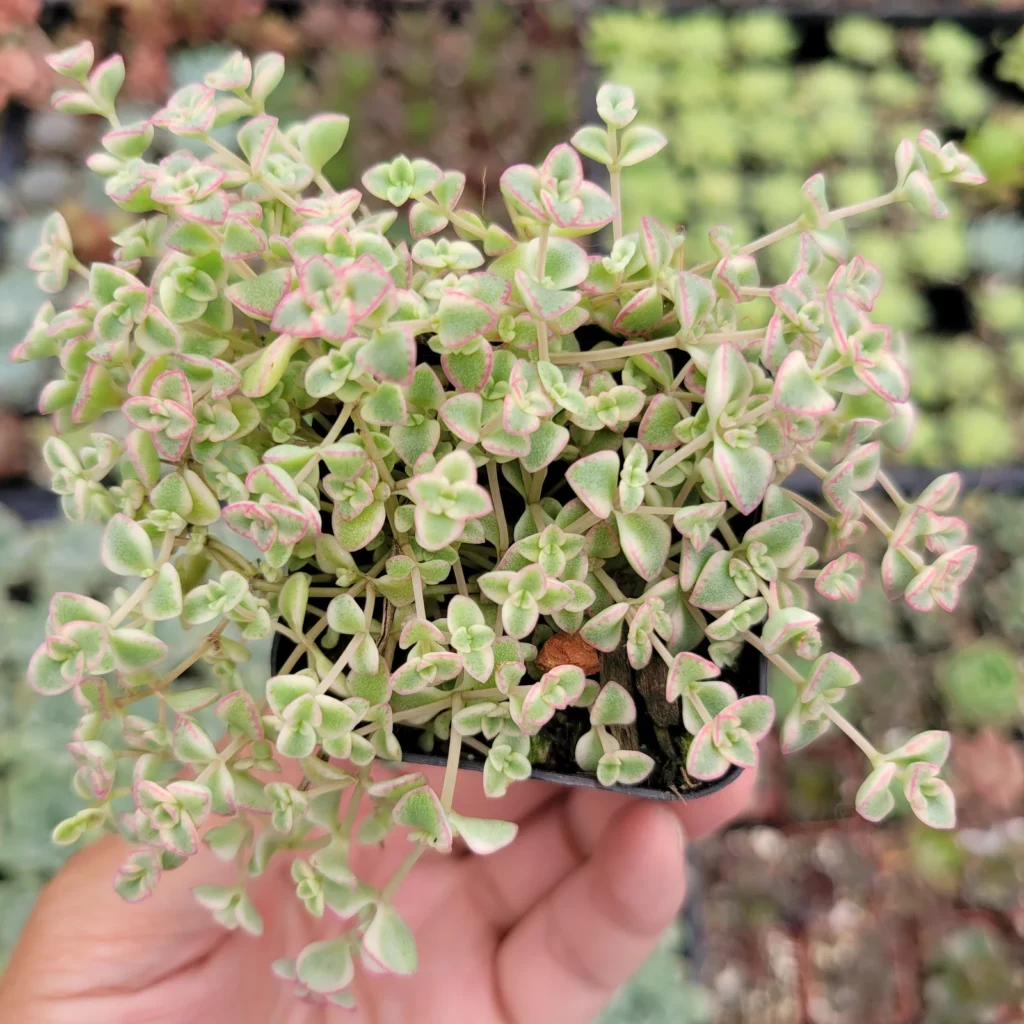
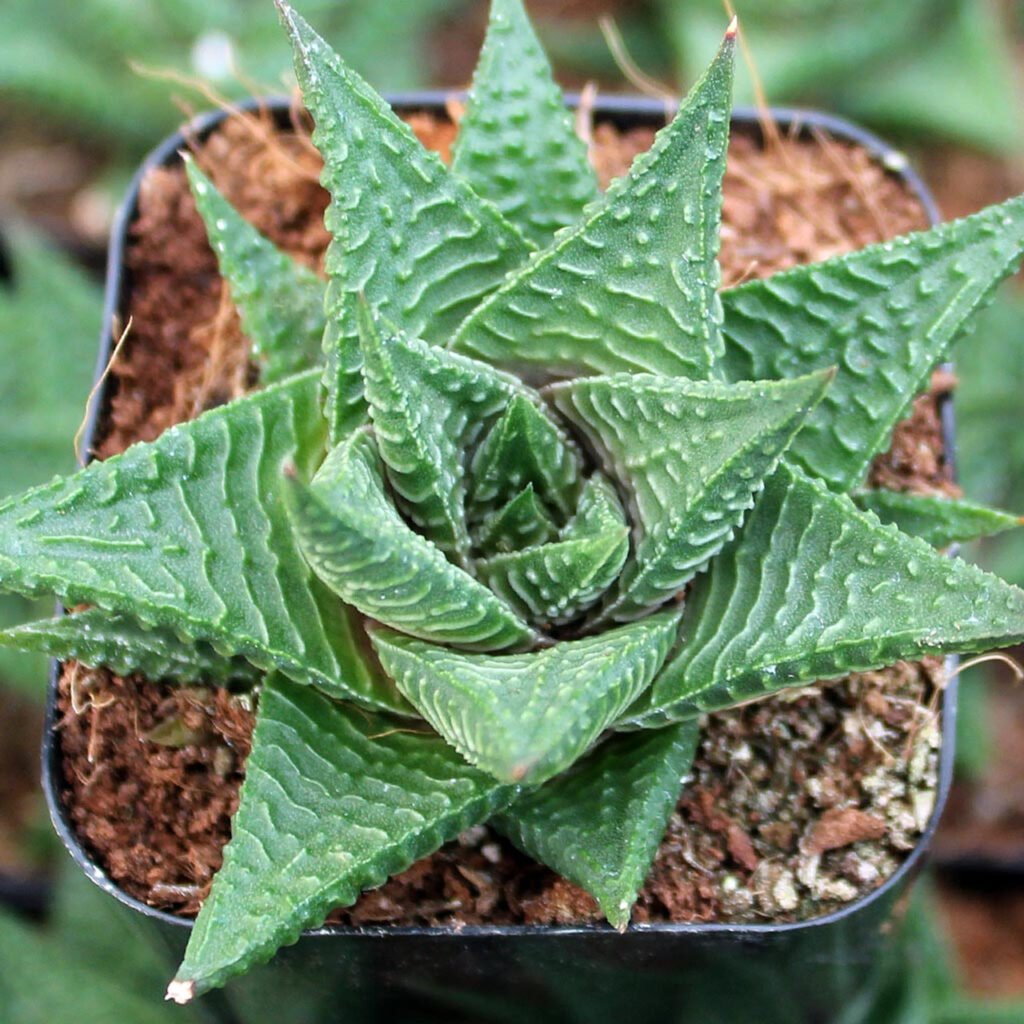
Crassula ‘Buddha’s Temple’
This stunning Crassula hybrid resembles an ancient temple tower, with tightly stacked square-shaped leaves that form a precise column. The layered symmetry and cool, bluish-gray hue make it a collector’s dream. It thrives in bright indirect sunlight and prefers being root-bound in a compact pot. Because of its narrow structure, it’s ideal for desks, windowsills, or even minimalist succulent arrangements.
Sedum ‘Little Missy’
If you love compact, cascading patterns, Sedum ‘Little Missy’ is a charming succulent with tiny, variegated rosettes. The leaves are pale green with pinkish edges, and they grow in tight clusters that spill attractively over the sides of containers.
Though not a classic “geometric” succulent in form, the uniform rosette clusters mimic a repeating pattern that’s quite eye-catching when planted en masse.
Haworthia limifolia (Fairy Washboard)
Another striking member of the Haworthia family, Haworthia limifolia, has dark green, ridged leaves that spiral out in a perfect rosette. The raised, washboard-like texture of the leaves is what gives this plant its whimsical nickname.
It does well with infrequent watering and makes a beautiful addition to low-light areas indoors. This plant’s geometric precision paired with tactile appeal makes it a conversation starter.
Caring for Geometric Succulents Indoors
Succulents with geometric features aren’t just attractive—they’re also relatively low-maintenance when cared for correctly.
Since many of these are compact or slow-growing, they’re perfect for shelves, tabletops, and window ledges. Here’s how to keep them healthy indoors.
Light Requirements
Most geometric succulents thrive in bright, indirect sunlight. A south- or east-facing window usually works well. Avoid intense afternoon sun directly on the leaves of Haworthias and Gasterias, which can scorch.
If you don’t get enough natural light indoors, consider using a grow light to maintain healthy growth and form. Geometric succulents need consistent light to maintain their structure and color intensity.
Watering and Drainage
Use the “soak and dry” method—water deeply, then wait until the soil is completely dry before watering again. Overwatering is a major threat, especially for rosette-forming succulents.
Most of these plants are drought-tolerant and do better when slightly neglected than when over-cared for.
Make sure pots have drainage holes or use a well-draining soil mix with perlite or pumice if growing in decorative containers.
Temperature and Humidity
Geometric succulents generally prefer warm, dry conditions. Aim to keep indoor temperatures between 18°C to 26°C (65°F to 78°F). Avoid placing them in high-humidity spots like bathrooms, unless there’s great airflow.
Displaying Geometric Succulents Creatively
One of the most exciting aspects of geometric succulents is their design versatility. Their architectural qualities make them easy to pair with modern interiors. Here are a few display ideas:
Symmetry in Minimalist Spaces
Arrange several of the same variety (like Echeveria ‘Lola’ or Aloe polyphylla) in a row on a shelf or table. Their repetition emphasizes the symmetry in modern or Scandinavian decor styles.
Glass Terrariums with Layers
Small rosette-shaped succulents like Haworthia cymbiformis or Graptopetalum look incredible inside open terrariums. Use layers of pebbles, sand, and cactus mix to accentuate the clean geometry.
Succulent Grids and Patterns
Plant various geometric succulents in a shallow wooden tray or grid planter, combining textures and forms. Alternating Echeverias and Sempervivums creates an artful living mosaic.
Floating Wall Frames
Mount small succulents like Crassula perforata or Sedum species into shadow box frames filled with moss or coconut fiber. These living wall displays bring structured nature into your vertical space.
Common Problems with Geometric Succulents
Even though they’re low maintenance, geometric succulents aren’t immune to trouble. Here are a few common issues:
1. Leaf Stretching (Etiolation)
When succulents don’t get enough light, their once-tight patterns begin to stretch out and lose their geometric symmetry.
This is a common issue indoors—especially in winter. Rotate your pots weekly and supplement with grow lights when needed.
2. Leaf Shriveling or Dropping
This often results from inconsistent watering—either too much or too little. Check the soil moisture, and be sure your pots allow for proper drainage.
3. Pest Infestation
Mealybugs or spider mites can nest in the tight rosettes. Inspect regularly and wipe leaves gently with a cloth dipped in diluted neem oil or mild insecticidal soap if needed.
4. Root Rot
Usually caused by overwatering or compacted soil. If the plant becomes soft and mushy at the base, remove it from the soil, cut off the damaged parts, let it callous, and replant in dry soil.
Propagating Your Geometric Succulents
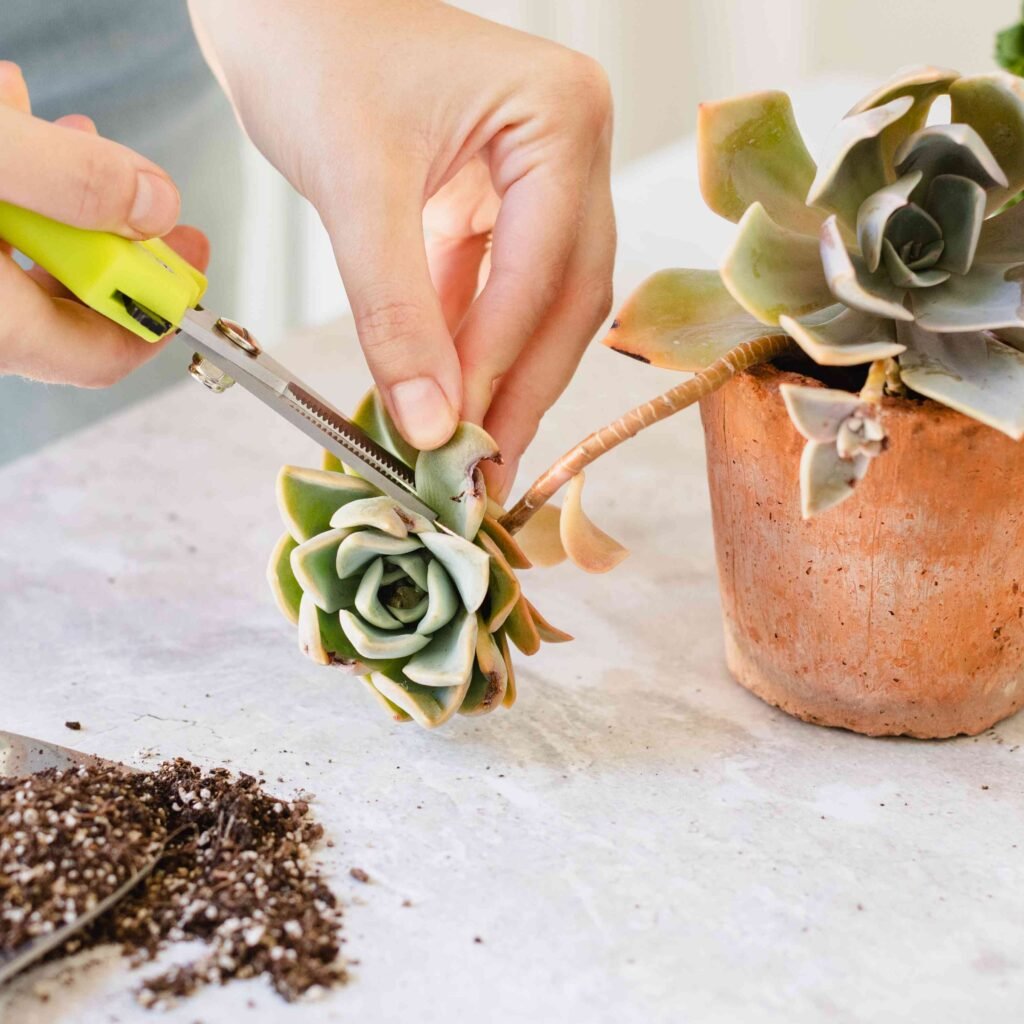
Propagation is a fun way to multiply your collection or share your favorite patterns with friends.
Leaf Cuttings
For succulents like Graptopetalum or Echeveria, simply twist off a healthy leaf and place it on dry soil. It will begin to root and form a new rosette over a few weeks.
Stem Cuttings
Trailing succulents like Crassula perforata can be snipped and replanted. Let the cuttings dry for a day or two before inserting them into soil.
Offsets and Pups
Succulents such as Haworthias and Sempervivums produce babies (offsets) that can be gently removed and replanted once mature enough. Use a gentle touch and a clean knife if needed.
Are Geometric Succulents Pet Safe?
Many of the succulents mentioned here—like Haworthias, Echeverias, and Sempervivums—are generally non-toxic to pets, making them suitable for homes with cats or dogs.
However, be cautious with some species. For instance, Aloe vera and certain Crassulas can be mildly toxic if ingested. Always check your plant’s safety using the ASPCA’s pet-safe plant list before placing them within paw’s reach.
If you want to be extra safe, elevate your display or use wall planters out of reach from curious pets.
Final Thoughts
Succulents with geometric patterns aren’t just visually captivating—they’re also a peaceful presence in any space. Their structured beauty adds a modern, architectural element that aligns well with contemporary aesthetics.
Plus, their forgiving care routine means they’re well-suited for busy lifestyles, apartment dwellers, and anyone new to succulent gardening.
Whether you’re drawn to the precise spirals of Aloe polyphylla or the subtle textures of Haworthia limifolia, there’s a geometric succulent that will fit your space and personality.
By providing the right light, drainage, and styling flair, you can create an eye-catching indoor display that brings joy, structure, and nature together in harmony.
FAQs: Succulents with Geometric Patterns
Which succulent has the most perfect geometric pattern?
Aloe polyphylla is widely admired for its flawless spiral pattern made from five rows of leaves, making it a standout for geometric perfection.
Do all succulents have geometric patterns?
No, not all. While many succulents naturally grow in spirals or rosettes, others have trailing or spiky forms that aren’t geometric but are still beautiful.
How can I prevent my geometric succulent from stretching?
Place it in bright, indirect sunlight and rotate the pot weekly to ensure even light exposure. Use grow lights if your space lacks natural light.
Can geometric succulents survive indoors year-round?
Yes, most can thrive indoors with the right care—adequate light, good drainage, and careful watering.
Is it okay to prune geometric succulents?
Yes. You can prune leggy growth or remove damaged leaves to maintain their symmetry and shape.
